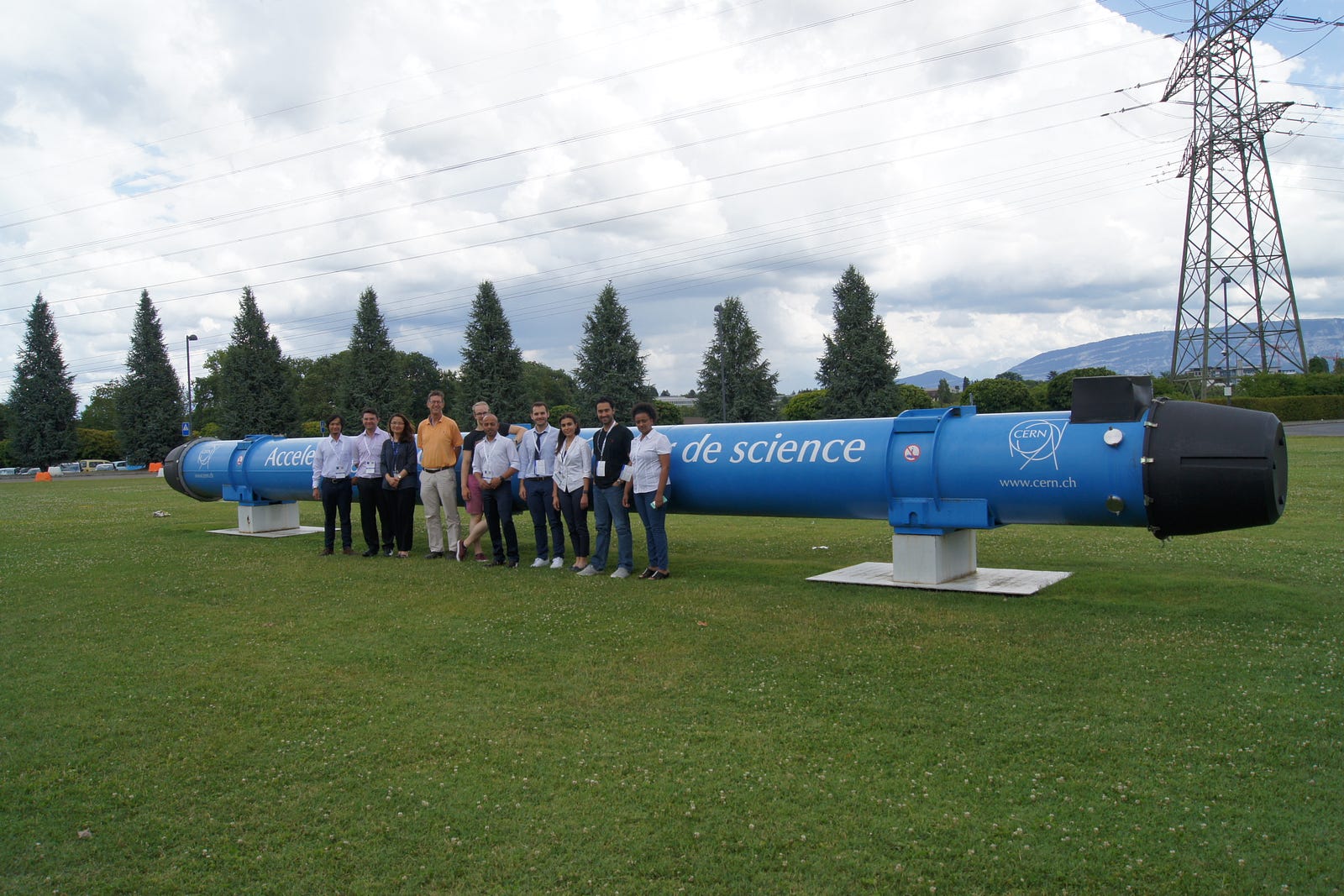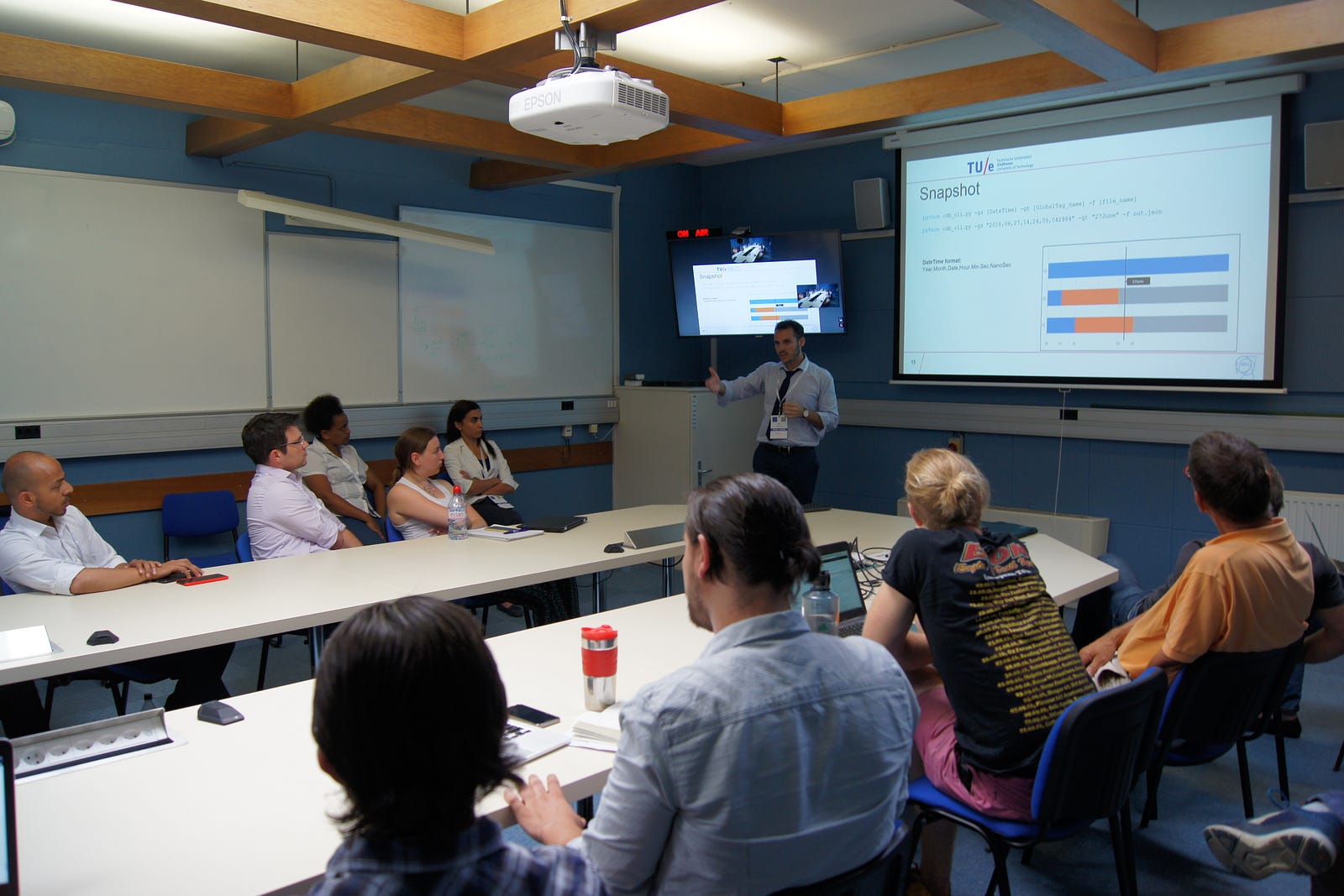In search for hidden particles at CERN
In search for hidden particles at CERN
After proving the existence of the Higgs boson in 2012, the research at CERN on the fundamental structure of the universe — and thus the origin of our existence — did not stop. New experiments were set up to further explore the basic building blocks of matter, to expand the knowledge about their behavior, and provide insights into the fundamental laws of nature. The latest PDEng Software Technology (ST) project was involved in one of the new proposals for such an experiment: SHiP.
At CERN, the European Organization for Nuclear Research, physicists and engineers use the world’s largest and most complex scientific instruments to study the basic constituents of matter. Particles are made to collide together at close to the speed of light in the 27 kilometer long underground accelerator. “This process gives physicists clues about how the particles interact, and pushes the boundaries of theories, such as the Standard Model, that describe our fundamental forces of our universe,” thus Eric van Herwijnen, Applied Physicist and one of CERN’s stakeholders in the project.


Physics and software technologyWhat has all that to do with software technology? In 2017, all the experiments of CERN together generated 72 petabytes of data. Not only data that comes directly from the experiments, but also conditions data
Van Herwijnen: “A few years ago, CERN and TU/e’s PDEng ST program collaborated in another project. Now we are working on a proposal for a new experiment called SHiP (Search for Hidden Particles) and we needed the help of technological designers to design and implement the conditions database.” He continues: “Through our collaboration with the PDEng ST program, we had the luxury to have seven trainees work full-time on our conditions database for six weeks so that we ourselves could concentrate on our own work.”


Different backgroundsThe PDEng Software Technology is a two-year salaried post-master technological designer program on a doctorate level for MSc graduates with a degree in the field of Computer Science or a related field. It prepares the trainees for a career in industry by strengthening their theoretical basis and confronting them with challenging problems from industrial partners. Yanja Dajsuren, PDEng ST Program Director: “In our program, we aim to find a variety of clients that offer complex software design challenges. This is a valuable lesson for our trainees since they will not only work with software engineers in their future careers, but also with clients from other professional backgrounds.”
This explains why Dajsuren was pleased with the collaboration with CERN: “This time our trainees were working for and with physicists. This requires a completely different way of communicating with the client, as transparent as possible, with the constant reminder not to go to deep into the technical details using software jargons.” Ani Megerdoumian, PDEng ST trainee and project manager, further explains: “We needed to adjust our output somehow to be understandable for both sides. As software engineers we are trained to express the domain knowledge, analysis, and the design of our solution in modeling and programming languages. However, the client has no such knowledge, thus we needed to adjust and produce new statements and schemas to confirm the understandings and procedures.”
Well-functioning proof of conceptThis approach turned out to be the right one. After the final presentation, van Herwijnen started the evaluation by addressing the project team: “I was pleased to see you understood our problem and got this far in such a short period.” A deserved compliment. Within six weeks, the trainees succeeded in delivering a functioning proof of concept for the conditions database for the SHiP experiment. The delivered product has efficient code with the least amount of programming lines as possible.


The work of trainees, started with getting acquainted with the domain and doing a comparative study of conditions databases of previous particle physics experiments and formulating the requirements for the database. This led to building the conditions database based on MongoDB and using Python for writing the code.
How did the project team manage to make such progress in just a few weeks’ time? Megerdoumian: “To manage this, we used an agile approach, the team operated cross-functional, and was committed to realize the common goals we set each sprint.” She continues: “We tried to achieve specific level of quality, assured with QA rankings. And we also had continuous integration, which helped us to manage the time of building and delivering the project.” Pranav Bhatnagar, Team Leader and SCRUM master, adds: “One of the major non-functional requirements from client’s side was to keep the code as short as possible and in addition really easy to use for scientists at CERN, whereby they wouldn’t have to write more than one line command to retrieve from or enter the data into the database. I can proudly say that the development team successfully manage to achieve that and the Client’s feedback was very positive towards that.”
Implementation of the trainees’ workAfter the final presentation at CERN, the PDEng ST trainees handed over the project deliverables to CERN. They will further test and implement the work of the trainees. “But we will definitely keep in touch with them to ask them for advice,” says Van Herwijnen. And when asked about when the implementation will take place, he says: “Unfortunately, the proof of concept could not be implemented in time for our test beam this summer. But we will make sure the conditions database is in place for our second test run.” If everything goes according to plan, the SHiP experiment will be approved in 2020. And perhaps this will result in some new pieces to fill in the puzzle that explains the origin of our existence.
